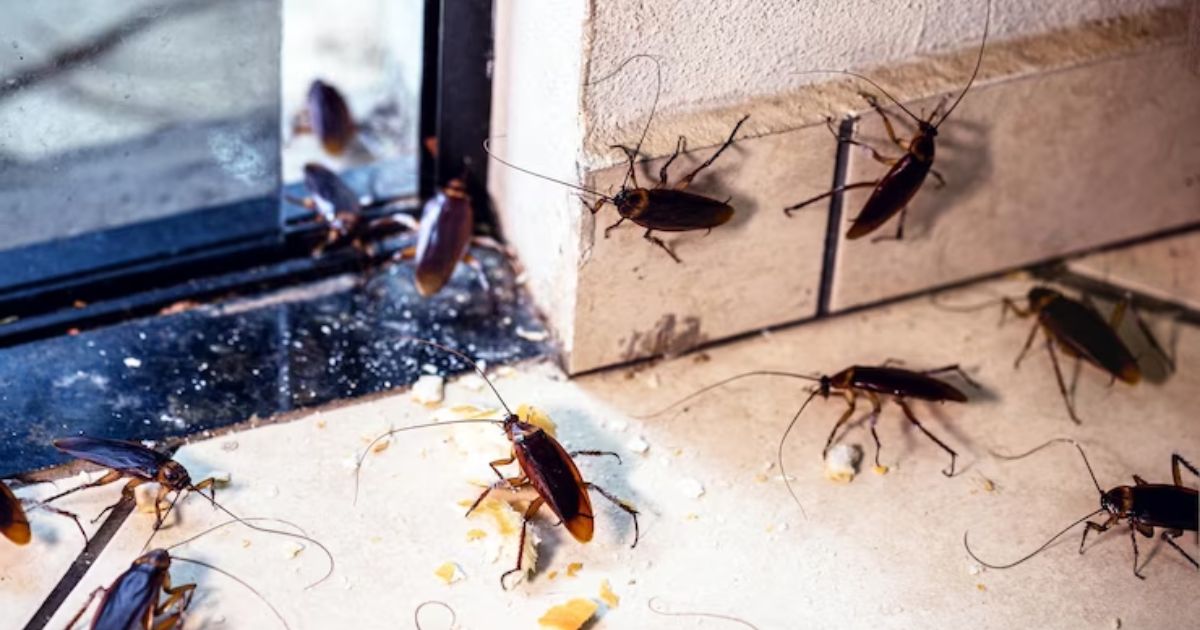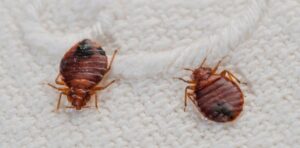Do Bed Bugs Like the Heat
In the quest to understand and combat bed bug infestations, one question that often arises is whether these pests have a preference for heat. Bed bugs, scientifically known as Cimex lectularius, are notorious for their ability to thrive in various environments, including the bedrooms of unsuspecting individuals. In this article, we will explore the relationship between bed bugs and heat, shedding light on their temperature preferences and the implications for effective eradication strategies.
By delving into the science behind their attraction to heat and the use of heat as a treatment method, we hope to provide valuable insights for those seeking to eliminate these resilient pests. Join us as we uncover the truth about whether bed bugs truly like the heat.
Key Takeaways
- Bed bugs are ectothermic insects, meaning their body temperature is regulated by their environment.
- Bed bug eggs require a temperature range of 70-90°F (21-32°C) to hatch successfully.
- Higher temperatures above 113°F (45°C) can be lethal to both adults and eggs.
- Bed bugs thrive within a temperature range of 70°F to 80°F (21°C to 27°C) and can survive in temperatures as low as 46°F (8°C) and as high as 122°F (50°C) for short periods.
Bed Bugs and Temperature Preference
How do bed bugs respond to different temperature conditions? Understanding the behavior of bed bugs in relation to temperature is crucial in effectively combating their infestations. Bed bugs are ectothermic insects, which means that their body temperature is regulated by their environment. They are known to be resilient and adaptable, capable of surviving extreme conditions. However, research has shown that bed bugs have certain temperature preferences that affect their behavior and reproductive success.
For instance, bed bug eggs require a temperature range of 70-90°F (21-32°C) to hatch successfully. Higher temperatures, above 113°F (45°C), can be lethal to both adults and eggs, while lower temperatures, below 46°F (8°C), can impair their development and survival. Therefore, understanding the impact of temperature on bed bug behavior provides valuable insights for effective pest management strategies.
Ideal Temperature Range for Bed Bug Infestation
The ideal temperature range for bed bug infestation is an important factor to consider when dealing with these pests. Bed bugs thrive in temperatures between 70 to 80 degrees Fahrenheit, which is why they are often found in warm indoor environments, such as bedrooms. However, they can also survive in colder temperatures, with studies showing that they can withstand temperatures as low as freezing for short periods of time.
It’s worth noting that certain furniture, like leather couches, can provide harborage for bed bugs, contributing to their presence in various parts of the home. Understanding this temperature range and their affinity for places like leather couches can help inform effective pest control strategies and prevention methods.
Optimal Bed Bug Temperature
Bed bugs thrive within a temperature range that is ideal for their infestation. The optimal temperature range for bed bugs is between 70°F and 80°F (21°C and 27°C). Within this range, bed bugs can reproduce and develop at a faster rate. However, it is important to note that bed bugs can survive in temperatures as low as 46°F (8°C) and as high as 122°F (50°C) for short periods of time.
Heat treatment processes have been widely used to combat bed bug infestations. The goal of heat treatment is to raise the temperature of the infested area to a level that is lethal to bed bugs. Typically, temperatures of 120°F to 140°F (49°C to 60°C) are used to achieve effective results. At these temperatures, bed bugs and their eggs are unable to survive, leading to the eradication of the infestation. It is important to ensure that the entire area is uniformly heated to eliminate any potential hiding spots for the bed bugs.
Heat and Bed Bugs
Within the optimal temperature range of 70°F to 80°F (21°C to 27°C), bed bugs can thrive and quickly multiply, making heat treatment an effective method to eradicate infestations. Bed bug heat treatment involves exposing infested areas to high temperatures, which has several benefits:
- Rapid elimination: Heat treatment raises the temperature to a level that is lethal to bed bugs and their eggs. This effectively kills off the entire infestation, eliminating the need for multiple treatments or the use of chemicals.
- Penetration into hiding spots: Heat can penetrate deep into cracks, crevices, and other hiding spots where bed bugs may be hiding. This ensures that even the most hidden pests are exposed to the lethal temperatures.
- Non-toxic and environmentally friendly: Heat treatment does not involve the use of chemicals, making it a safe and eco-friendly option. It is an ideal choice for those concerned about the harmful effects of pesticides on their health and the environment.
Cold Vs. Warm?
Heat treatment is effective in eradicating bed bug infestations, but it is important to consider the ideal temperature range for these pests. Bed bugs thrive in environments with temperatures between 70°F and 80°F (21°C and 27°C), which is why they are commonly found in human dwellings. However, extreme temperatures can also affect their survival. While they are more resistant to cold weather, they cannot survive in temperatures below freezing (32°F or 0°C) for an extended period of time.
On the other hand, temperatures above 113°F (45°C) can quickly kill bed bugs. Therefore, temperature control is crucial in eliminating these pests. Utilizing heat treatments or cold treatments in combination with other pest control methods can help ensure the complete eradication of bed bug infestations.
Why Bed Bugs Are Attracted to Heat
The attraction of bed bugs to heat can be attributed to their thermotaxis behavior. Bed bugs possess specialized heat-sensing organs called thermoreceptors, which allow them to detect and navigate towards sources of heat. These thermoreceptors enable bed bugs to seek out warm-blooded hosts, as human body heat serves as an ideal source of sustenance for these pests. The ability of bed bugs to locate and be attracted to heat is an adaptive trait that has contributed to their survival and infestation success.
Heat and Bed Bug Connection

The affinity between bed bugs and heat stems from their strong attraction to elevated temperatures. Bed bugs have a remarkable heat tolerance, enabling them to survive in a wide range of environments. Here is a list of three reasons why bed bugs are attracted to heat:
- Heat accelerates their metabolic rate: Bed bugs are ectothermic organisms, meaning their body temperature is regulated by the temperature of their environment. Higher temperatures increase their metabolic rate, allowing them to feed and reproduce more efficiently.
- Heat disrupts their reproductive cycle: Elevated temperatures can disrupt the development of bed bug eggs, nymphs, and adults, reducing their ability to reproduce and infest new areas.
- Heat treatment success rate: Heat treatments are commonly used to eliminate bed bug infestations. The high temperatures effectively kill bed bugs and their eggs by denaturing their proteins and dehydrating them.
Understanding the connection between bed bugs and heat is crucial for effective pest control strategies. Now, let’s delve into the next section, which explores the phenomenon of thermotaxis in bed bugs.
Thermotaxis in Bed Bugs
Bed bugs are attracted to heat due to the phenomenon of thermotaxis, which is characterized by their strong inclination towards elevated temperatures. Thermotaxis research has revealed that bed bugs are highly sensitive to heat and can detect even small temperature variations. This ability allows them to locate warm-blooded hosts, such as humans, as they seek out a blood meal.
Studies have shown that bed bugs have heat receptors on their antennae, which enable them to sense and navigate towards heat sources. These receptors help them distinguish between different temperatures and guide their movement towards warmer areas. This thermotactic behavior is crucial for their survival and reproductive success.
Furthermore, thermotaxis research has shown that bed bugs can adapt to warmer environments and develop heat-resistant strains. These strains have evolved to withstand higher temperatures, making them more resilient and difficult to eliminate. The ability of bed bugs to adapt to heat poses a significant challenge in the control and eradication of infestations.
Understanding the mechanisms behind thermotaxis in bed bugs is essential for developing effective strategies for their management. By targeting their attraction to heat, researchers and pest control professionals can devise innovative approaches to eradicate these pests and protect human health.
Heat as a Bed Bug Treatment Method
Heat is an effective treatment method for bed bugs. When exposed to high temperatures, bed bugs are unable to survive, making heat treatment an efficient way to eradicate these pesky insects. Here are three reasons why heat is an effective bed bug treatment method:
- High temperatures penetrate deep into cracks and crevices where bed bugs hide, ensuring that all life stages of the pests are eliminated. Heat can reach areas that may be difficult to access with other treatment methods.
- Heat treatment has a high success rate in killing bed bugs, with studies showing effectiveness rates of up to 99%. This makes it a reliable option for eliminating infestations.
- Heat treatment is a safe alternative to chemical pesticides. While precautions should be taken to protect belongings and prevent heat damage, it does not leave behind any harmful residues like some chemical treatments.
When considering bed bug treatment, heat should be considered as a viable option due to its effectiveness and safety precautions.
Effectiveness of Heat in Bed Bug Eradication
One key aspect to consider when evaluating the effectiveness of heat as a bed bug eradication method is its ability to target all life stages of these resilient pests. Heat treatment involves raising the temperature of the infested area to lethal levels for bed bugs, effectively killing them and their eggs. Studies have shown that heat treatments can achieve a success rate of over 90% in eradicating bed bugs.
Unlike chemical pesticides, heat treatments do not leave behind any residue or harmful chemicals, making it a safer option for both humans and pets. However, it is important to note that heat treatments should be carried out by professionals who are trained in handling the equipment and implementing safety measures to prevent any accidents or damage to the property.
Risks and Challenges of Heat Treatment for Bed Bugs

Implementing heat treatment for bed bugs comes with several risks and challenges that must be carefully addressed. While heat treatment has proven to be effective in eradicating bed bugs, it is crucial to consider the potential drawbacks. Here are three important risks and challenges associated with heat treatment:
- Damage to belongings: Heat treatment involves raising the temperature in the infested area to a level that kills bed bugs. However, this high temperature can also cause damage to certain items, such as electronics, artwork, and delicate fabrics.
- Uneven heat distribution: Ensuring that heat reaches all areas of the infested space can be challenging. Poor heat distribution may result in some bed bugs surviving the treatment and reinfesting the area.
- Fire hazards: Heat treatment involves using specialized equipment that generates high temperatures. If not properly handled, this equipment can pose a fire risk, especially in areas with flammable materials.
Considering these risks, it is important to weigh the benefits of heat treatment against alternative treatment methods to determine the most suitable approach for bed bug eradication.
Tips for Using Heat to Eliminate Bed Bugs
When using heat to eliminate bed bugs, it is important to follow proper guidelines and precautions. Heat treatments have been proven to effectively eradicate bed bugs by raising the temperature in infested areas to a level that is lethal to these pests. However, it is crucial to use heat treatment methods correctly to ensure success and minimize any potential risks. Here are some tips for using heat to eliminate bed bugs:
| Tips for Using Heat to Eliminate Bed Bugs |
|---|
| 1. Prepare the area by removing clutter and sealing cracks and crevices. |
| 2. Use professional-grade equipment to ensure accurate temperature control. |
| 3. Monitor the temperature throughout the treatment process to ensure effective heat distribution. |
| 4. Follow manufacturer guidelines and safety instructions to prevent accidents and property damage. |
Pros and cons of heat treatment for bed bugs should be considered before implementing this method. While heat treatment can be highly effective in eliminating bed bugs, it can also be costly and time-consuming. Additionally, certain items and materials may be sensitive to high temperatures, requiring special precautions. By following these tips and considering the pros and cons, individuals can make informed decisions when using heat treatments for bed bug elimination.
FAQ’s
Does heat keep bed bugs away?
No, heat does not keep bed bugs away; in fact, they thrive in warmer environments, but extreme heat treatments can be used to eliminate them.
Can bed bugs survive in a hot house?
Bed bugs can survive in a hot house, but sustained exposure to high temperatures, typically above 120°F (49°C), can effectively eliminate them.
Do bed bugs like cold rooms?
No, bed bugs prefer warmer environments and are less active in cold rooms.
Conclusion
In conclusion, bed bugs have a strong preference for heat and are attracted to temperatures ranging from 70 to 90 degrees Fahrenheit. Heat treatment has been found to be an effective method for eradicating bed bug infestations, with studies showing a success rate of over 90%. However, it is important to note that heat treatment can pose risks and challenges, such as potential damage to certain materials and the need for professional expertise. As an interesting statistic, it is estimated that bed bugs can survive without feeding for up to a year, emphasizing the urgency in addressing infestations promptly.













